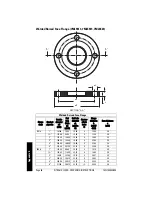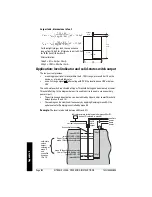
7ML19985GE04
SITRANS LC500 – OPERATING INSTRUCTIONS
Page 107
Glossar
y
Glossary
capacitance: the property of a system of conductors and dielectrics that permits the storage of
electricity when potential differences exist between the conductors. Its value is
expressed as the ratio of a quantity of electricity to a potential difference, and the unit is a
Farad.
capacitor: a device in a circuit that has the potential to store an electric charge. Typically a
capacitor has 2 conductors or electrodes separated by a layer of a nonconducting
material called a dielectric. With the conductors on opposite sides of the dielectric layer
oppositely charged by a source of voltage, the electrical energy of the charged system is
stored in the polarized dielectric.
derating: to decrease a rating suitable for normal conditions according to guidelines specified
for different conditions.
dielectric: a nonconductor of direct electric current.
1
dielectric constant: the ability of a dielectric to store electrical potential energy under the
influence of an electric field. This is measured by the ratio of the capacitance of a
condenser with the material as dielectric to its capacitance with vacuum as dielectric.
The value is usually given relative to a vacuum /dry air: the dielectric constant of air is 1
1
.
immiscible: incapable of mixing or attaining homogeneity.
implicit: for example in “the units are implicit in pF”, the units are implied, or assumed to be pF,
because there is no other option.
miscible: capable of being mixed.
repeatability: the closeness of agreement among repeated measurements of the same
variable under the same conditions.
saturation: a condition in which any further change of input no longer results in a change of
output. For example, “the loop-current will saturate to 3.8 or 20.5 if the level exceeds the
Range settings”.
solid-state device: a device whose function is performed by semi-conductors or the use of
otherwise completely static components such as resistors and capacitors.
stilling-well: a grounded metal tube with openings.
1.
Many conductive liquids/electrolytes exhibit dielectric properties; the relative
dielectric constant of water is 80.







































